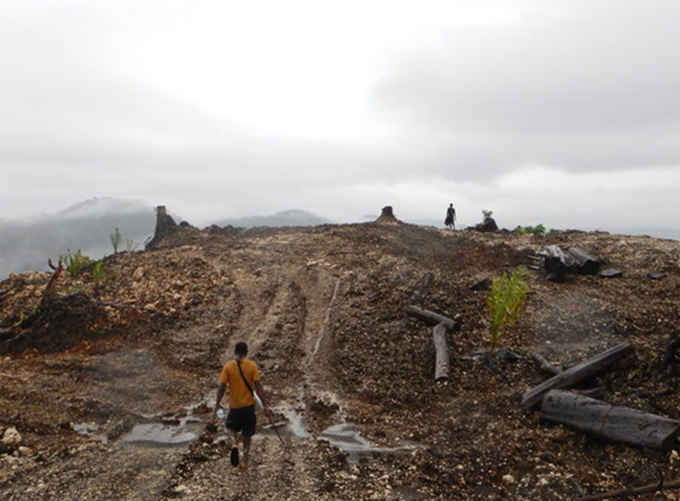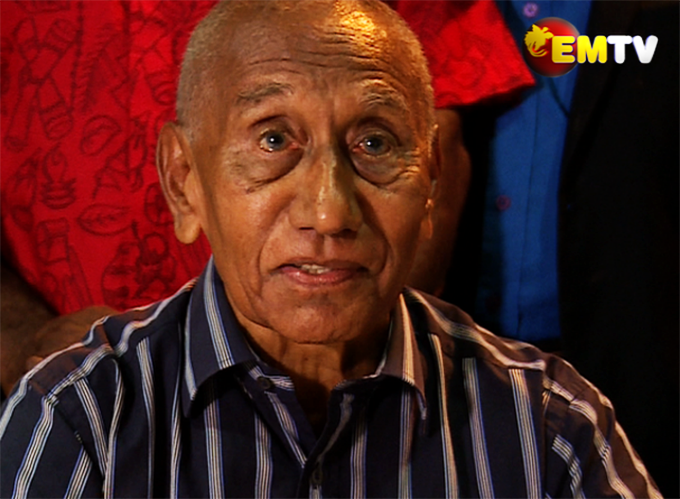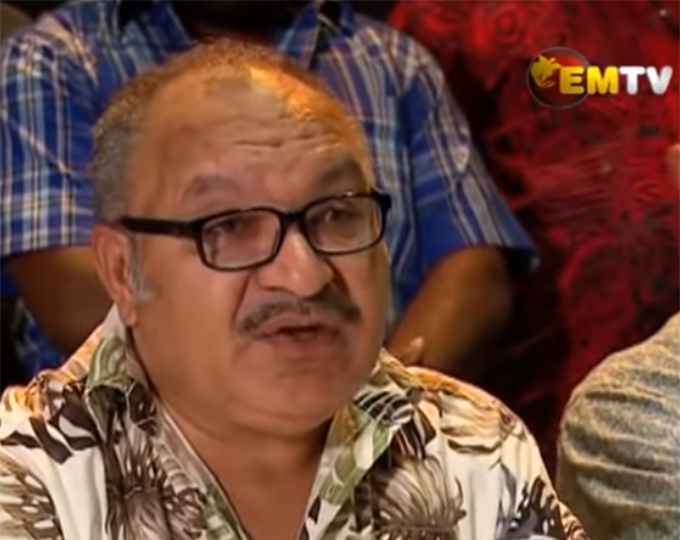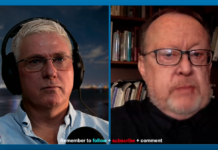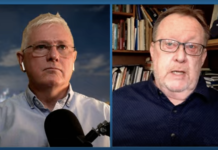Editor’s Note: Here below is a list of the main issues currently under discussion in New Zealand and links to media coverage.


Today’s content
Nats claim to have revealed budget details, Treasury say system was “deliberately hacked”
Jamie Ensor (Newshub):‘Multiple and persistent’ attempts to access Treasury systems – chief executive
RNZ: Budget info on Treasury website under ‘multiple and persistent attack’
Hamish Rutherford (Stuff): Treasury says there were ‘more than 2000’ attempts to access Budget documents
Herald: Budget: 2000 hack attempts of Treasury website over 48 hours
Richard Harman (Politik): Treasury hacked: major security threat
Sam Sachdeva (Newsroom): Hack claim raises stakes for National and Treasury
Jo Moir (RNZ): National Party leader and Finance Minister in standoff over Budget ‘leak’
Herald: Treasury announcement and wording of ‘hacking’ is concerning, a tech commentator says
Jason Walls (Herald): Budget ‘leak’: Treasury says it was ‘deliberately and systematically’ hacked
Henry Cooke (Stuff): ‘Budget leak’ referred to police after Treasury says it finds evidence of hacking
RNZ: National Party ‘Budget leak’: Treasury ‘deliberately hacked’
Claire Trevett (Herald): National Party leader Simon Bridges learns to turn the other leak (paywalled)
1News: Budget 2019 leaks by National came after Treasury was ‘deliberately and systematically hacked’
Newshub: Budget leak: Simon Bridges accuses Grant Robertson of smear job
Tova O’Brien and Jenna Lynch (Newshub): Budget leak to be referred to police by Treasury
David Farrar: My guess as to what happened
—————
Jane Patterson (RNZ): Budget leak: Embarrassing error or conspiracy?
Claire Trevett (Herald): PM cannot afford to let Budget ‘leak’ slide (paywalled)
Stacey Kirk (Stuff): Jacinda Ardern’s Government is in paralysis as National hijacks its Wellbeing Budget
Tova O’Brien (Newshub): National’s Budget 2019 drops could be the Government’s greatest crisis
Barry Soper (Newstalk ZB) Budget spoiler Simon Bridges had good reason to be happy
Jason Walls (Herald): PM Jacinda Ardern refused to offer Treasury her full confidence following Budget ‘leak’
Henry Cooke (Stuff): Government says budget details not from Beehive, while PM refuses to state confidence in Treasury
Jason Walls (Herald): Budget 2019: The Treasury to investigate ‘potential’ leak of details to National Party
Anna Whyte (Herald): Finance Minister Grant Robertson admits some numbers in Budget leak ‘are right’
Jason Walls (Herald): Government concedes some of National’s Budget 2019 details correct
Zane Small (Newshub): Finance Minister Grant Robertson admits some Budget details National released are correct
Jenée Tibshraeny (Interest): Robertson admits some of National’s Budget figures are correct
Collette Devlin (Stuff): National’s Budget ‘reveal’ police, justice and corrections could receive large boosts in funding
Lucy Bennett (Herald): National Party claims it has details of mental health spending in Budget
Lucy Bennett (Herald): How health is looking if National’s Budget 2019 proven right
Collette Devlin (Stuff): Health Minister needs to apologise to midwives for Budget snubs – National
Amber-Leigh Woolf (Stuff): Conservation and the Emissions Trading Scheme emerge as winners in leaked Budget notes
Stacey Kirk and Henry Cooke (Stuff): Government to spend $1.3 billion on defence? Nats claim Budget details revealed
Zane Small (Newshub): National leader Simon Bridges drops more Wellbeing Budget details
Zane Small (Newshub): National leaks what it claims are Wellbeing Budget details
Anna Whyte (1News): ‘Money for tanks but not for teachers’ – Simon Bridges takes aim at Budget after claiming massive leak of details
Yvette McCullough (RNZ): National Party releases ‘key details’ from Budget
Thomas Coughlan (Newsroom): National claims to reveal Budget 2019 details
Budget
Hamish Rutherford (stuff): Budget claims show how little focus is on Grant Robertson’s Budget framework
Jamie Ensor (Newshub): Kiwis want Government’s Wellbeing Budget to focus on healthcare
Herald: Three views – What Budget 2019 needs to do: Richard Prebble, Sue Bradford, Ben Thomas (paywalled)
Amanda Larssen (Stuff): The wellbeing of still being here
RNZ: Speculation on govt back away from investment will have to wait until after Budget – PM
Michael Daly (Stuff): Jacinda Ardern hopes people see the ‘beginnings’ of changes they expect to mental health
Derek Cheng (Herald): Big budget expectations for drug and addiction treatment services (paywalled)
Matthew Littlewood (Timaru Herald): ‘Wellbeing Budget’ must tackle environment, Forest and Bird says
Samesh Mohanlall (Timaru Herald): Budget 2019: Wellbeing funds could help hopeful South Canterbury Hospice close its deficit
Maia Hart (Stuff): The ‘wishy-washy’ wellbeing Budget doesn’t hold water in Blenheim
Phil Smith (RNZ): The House: 30 months a year: the everlasting budget cycle
Stacey Kirk (Stuff): Government’s first ‘Wellbeing Budget’ hot off the presses ahead of unveiling
Education
Aaron Leaman (Stuff): Teachers’ mega-strike just the beginning
Jessica Long (Stuff): Teachers’ ‘mega-strike’: Pay talks in ‘gridlock’ ahead of Budget
Laura Walters (Newsroom): Buckle up folks, teachers aren’t done yet
John Gerritsen (RNZ): Teachers strike: ‘Not just about money, also about time, value, respect’
Herald Editorial: Warnings for Govt as Strike Nation takes hold (paywalled)
Simon Collins (Herald): Day of disruption as teachers walk out on 773,000 children (paywalled)
Kate Nicol-Williams (1News): Thousands of teachers and principals to strike nationwide today calling for better pay and work conditions
Alice Wilkins (Newshub): Teaching mega-strike: Teachers warn they’ll quit if demands not met
Eleanor Rarity (Timaru Herald): Former Waimate school principal says expectation teachers will fix everything
Simon Collins (Herald): Teacher: ‘I feel undervalued’ (paywalled)
Peter Lyons (ODT): High time we valued teachers
Jai Breitnauer (Spinoff): Performance related pay for teachers is a terrible idea
Josephine Franks (Stuff): Cop-turned-teacher says stress of teaching matches policing
Liz McDonald (Stuff): Teachers oppose strike as thousands of colleagues take to the streets
Stuff: ‘Martyred’ teachers like to exaggerate, but it’s not a bad job
Katy Jones (Stuff): Five Nelson teachers leave jobs at one school as teachers gear up for mega-strike
Alwyn Poole (Herald): ‘Strikes are missing the correct target’ (paywalled)
Simon Collins (Herald): Most schools will close tomorrow as hopes of last-minute talks collapse
Jessica Tyson (Māori TV): 50,000 teachers prepare for mega-strike tomorrow
Liu Chen (RNZ): Parents prepare as teachers head for mega strike tomorrow
Emily Brookes (Stuff): Teachers strike poses logistical hurdle for working parents
Adam Hollingworth (Newshub): How small businesses will cope with the teachers’ mega-strike
Josephine Franks and Charlotte Carter (Stuff): Auckland teachers’ strike: Protests, road closures and kids’ activities
Astrid Austin (Hawkes Bay Today): ‘I have it so much better here’: Hawke’s Bay teacher moved to Darwin, and got huge pay rise
Damian Rowe (Southland Times): Primary and secondary teachers set to mega-strike in Invercargill
Alice Angeloni (Stuff): Marlborough parents say teachers in mega-strike ‘deserve the world’
Georgina Campbell (Herald): Victoria University students come out swinging over proposed liquor ban
Te Aniwa Hurihanganui (RNZ): Wintec embeds introductory te reo Māori and tikanga Māori in programmes
Francis report
Derek Cheng (Herald): Speaker Trevor Mallard refuses to front about his ‘rape’ comments
Jamie Ensor (Newshub): Winston Peters says Parliament bullying, sexual harassment report shows only one side of story
Herald: Prime Minister Jacinda Ardern urges caution over Mallard and ‘tantamount to rape’ comment
Derek Cheng (Herald): Mallard’s ‘serious lapse in judgment’ raises questions – National
Anna Bracewell-Worrall (Newshub): Trevor Mallard accused of exacerbating allegations of sexual assault in Parliament
National Party culture review
Zane Small (Newshub): The National Party’s culture review fails to mention what prompted it
Derek Cheng (Herald): Simon Bridges defends National Party workplace culture review
Anna Whyte (1News): National Party release recommendations of health and safety review
Derek Cheng (Herald): National Party culture review recommends code of conduct
RNZ: National releases health and safety review recommendations
Alfred Ngaro to remain with National
Mike Hosking (Newstalk ZB): Alfred Ngaro’s backdown another nail in MMP coffin
Jamie Ensor (Newshub): Alfred Ngaro to remain National Party MP, won’t start new party
1News: MP Alfred Ngaro gives up on forming own conservative party, decides to stay with National
Herald: MP Alfred Ngaro will not split off from National to start new Christian party
Henry Cooke (Stuff): Alfred Ngaro will stay within National Party
RNZ: Alfred Ngaro decides against forming Christian party
Foulden Maar mine proposal, Mining Forum
Elena McPhee (ODT): Paleontologist breaks silence: ‘horrified’ over Foulden Maar
Elena McPhee (ODT): Academic ‘more than horrified’ at mining proposal
Hamish McNeilly (Stuff): Battle to save ‘essential’ Foulden Maar heats up
—————
ODT: Cull: Protesters expressing ‘overwhelming’ view of city
Hamish McNeilly (Stuff): Some fossil fuel plans ‘not welcome here’ – Dunedin mayor opens controversial conference
Simon Hartley (ODT): Mining industry on notice
Simon Hartley (ODT): Parker’s warning to sector
Simon Hartley (ODT): Under pressure to deliver
Hamish McNeilly (Stuff): Woman protesting controversial minerals forum in Dunedin taken to hospital
George Block (ODT): Clashes as police fail to remove climate protesters
George Block (ODT): Injured protester slams ‘brutal’ police as 3 arrested
1News: Police use bolt cutters to remove protesters from Dunedin coal conference
Newshub: Protester injured after confrontations outside Dunedin mineral conference
RNZ: Protesters block delegates from mining conference
No Right Turn: This is what the destruction of social licence looks like
Employing workers with disabilities
Evan Harding (Southland Times): Protesters turn up heat on Invercargill city councillors
Newshub: Top law firm Buddle Findlay opens its doors to employ young people with disabilities
Housing
Henry Cooke (Stuff): KiwiBuild scheduled to deliver just 1535 houses by 2020 election, a tenth of original goal
Jason Walls (Herald): Housing Minister Phil Twyford says he’s ‘disappointed’ by KiwiBuild’s performance so far
Jamie Ensor (Newshub): Prime Minister Jacinda Ardern needs to show courage and gut KiwiBuild – Judith Collins
Anne Gibson (Herald): Listen: PM Jacinda Arden admits KiwiBuild ‘hasn’t been at the pace we wanted’ but sticks to 100,000 target (paywalled)
Duncan Garner (Newshub): Has there been a bigger flop that Phil Twyford’s Kiwibuild?
Thomas Coughlan (Newsroom): Treasury raises fears for public housing funding
David Hargreaves (Interest): How high has the price been for first home buyers?
Sophie Trigger (Stuff): Demand for rentals sees rents spike in Marlborough
Susan Edmunds (Stuff): Houses are cheaper outside Auckland but here’s what you should know…
Transport
Amanda Cropp and Hamish Rutherford (Stuff): Shane Jones introduced Stan Semenoff as possible NZTA board member
Jonathan Mitchell (RNZ): Cyclists outraged by Tranzurban manager’s mocking Facebook post
Grant Bradley (Herald): Air fare warning as Air New Zealand cuts domestic capacity due to softening demand and increasing costs (paywalled)
John Anthony (Stuff): Air New Zealand reduces domestic capacity by 2 per cent, reviews fares
Dan Lake (Newshub: Air New Zealand reviewing airfares as it cuts back on domestic routes
Herald: Air NZ CEO denies possible move to politics
Rikihana Smallman (Stuff): King: Regulating electric transport devices ‘ludicrous’
Local government
Dileepa Fonseka (Stuff): Fewer tenders more ‘partnerships’ mooted by Wellington City Council CEO
RNZ: Insurance won’t cover Wellington library fix – mayor
Felix Desmarais (Stuff): No clear plan to re-house 350,000 items in Wellington’s Central Library as pop-up opens
Herald: Residential streets opened up for freedom camping: Councillors call for boycott of bylaw
Chris Morris (ODT): Cull standing down
1News: Dunedin’s mayor Dave Cull won’t seek re-election after nine years in office
Jono Galuszka (Manawatū Standard): Horizons Regional Council divided as it trims its livestreaming trial
Environment and conservation
Jono Galuszka (Manawatū Standard): Horizons gets rates rise under 5 per cent, but cuts freshwater funding to do it
Jono Galuszka (Manawatū Standard): New report paints a grim picture of wider Manawatū environment
Marty Sharpe (Stuff): Plan to make Napier and Hastings ratepayers pay $30 a year for defences against coastal erosion
Joanne Carroll and Paul Gorman (Stuff): West Coast rubbish debacle a ‘national emergency’ that needs more funding to clean up
Mark Quinlivan (Newshub): Westland District Council to ditch storm clean-up as it’s too expensive
Jody O’Callaghan (Stuff): Conservationist Jane Goodall says ‘more humane ways’ than 1080 to deal with invasive species
Skara Bohny (Nelson Mail): Brook Valley group not ruling out disbanding to avoid court costs
Herald: Record numbers of kiwi chicks released back into the wild
Torika Tokalau (Stuff): Drastic plastic problem: What rubbish ends up in Auckland’s harbour
Kirsty Johnston (Herald): Ratepayers charged 500 times more for water than bottling companies
Crime, gangs
RNZ: Simon Bridges’ crime statistics claims don’t add up – ex-National MP
Brittney Deugara (Stuff): When are crimes too dangerous for police officers to intervene?
Anusha Bradley (RNZ): Hawke’s Bay mayors’ gang patch ban rejected by Police Minister
Andre Chumko (Stuff): Gang Focus police unit to be established in Hawke’s Bay following mayors’ calls for public patch ban
Laura Wiltshire (Hawkes Bay Today): ‘Enough is enough’: Hawke’s Bay mayors unite to tackle rising gang population (paywalled)
1News: Hawke’s Bay mayors call ‘urgent meeting’ with Minister of Police over ‘deeply concerning’ gang activity
Justice, corrections
Lydia Lewis (Newshub): Sick prisoner Vicki Letele’s family considering taking Corrections to court after report into her death
Katie Doyle (RNZ): Family of ex-inmate and cancer sufferer Vicki Letele considering legal action against Corrections
1News: Corrections failed inmate Vicki Letele as she suffered with cancer, commission finds
RNZ: Vicki Letele’s family confirm report critical of prison care
Tema Hemi (Māori TV): Inmates unjustly treated by corrections staff
Stuff: Former prisoner paid up to $50,000 for being in custody too long
Dental care
Jonathan Broadbent (The Conversation): High cost means more than half of NZ’s young adults don’t access dental care
RNZ: Dental health reorientation at root of long treatment delays – Health Ministry
Health
1News: Paramedics nationwide voting on whether to strike, 1 NEWS understands
Herald: Sacked board member back as one of four commissioners overseeing Waikato DHB
Libby Wilson (Stuff): Surgeon, health expert, familiar face: Waikato DHB announces new deputy commissioners
Rachael Kelly (Southland Times): Health Minister ‘disappointed’ with Southern DHB’s maternity services roll out in Northern Southland
Mike Houlahan (ODT): Clark ‘disappointed’ with SDHB over service rollout
Collette Devlin (Stuff): Health Minister needs to apologise to midwives for Budget snubs – National
Janine Rankin (Manawatū Standard): Crowd funding launched for Women’s Health Collective
1News: GPs calling for Government to intervene as doctor shortage looms
RNZ: Watch: Pharmac head defends drug agency’s funding
RNZ: Northland measles case: More than 30 being monitored don’t have immunity
Hannah Martin (Stuff): Auckland measles outbreak: 72 confirmed cases
1News: Another New Zealand district considers outdoor ban on smoking and vaping
Dubby Henry and Luke Kirkness (Herald): Two people die in Auckland from the flu
Sophie Bateman (Newshub): Two Aucklanders die from flu, fears Australian outbreak could spread
Mental Health
Karen Brown (RNZ): Community-based mental health care saves the life of a new mum
Mike Houlahan (ODT): Wakari facility ‘no longer fit for use in current state’
Herald: What causes construction sector suicides? First report out on reasons for 300 deaths in a decade
MItchell Alexander (Newshub): Mental health: New Zealand’s self harm hospitalisations rising
Whale Oil book
David Fisher (Herald): Big Read: Book reveals Whaleoil blogger’s torment of family – and the fight to expose the truth (paywalled)
Sam Brooks (Spinoff): The 10 most shocking moments in the blistering new book ‘Whale Oil’
Stuff: New book lifts lid on Whale Oil blogger Cameron Slater’s dirty tactics
RNZ: New book looks at battle between Slater and Blomfield
No Right Turn: Are we China now?
Pete George: So what is the ‘Whale Oil’ book about?
Defence
Stacey KIrk (Stuff): Fancy new planes for the defence force – but will a $2.5b decision be put to tender?
Andrew McRae (RNZ): Vietnam veterans receive health, wellbeing support decades on
Racism, Christchurch mosque shootings
Rawiri Taonui: Is Christchurch more racist than other New Zealand cities?
David Williams (Newsroom): Frustration, concern with Chch Commission
Herald: ‘Egg Boy’ donates $100,000 towards Christchurch Foundation and Victims Support
Stuff: ‘Egg boy’ Will Connolly donates $100,000 to help mosque attack survivors
Gun control
Derek Cheng (Herald): New gun control group pushes for national register
1News: New advocacy group forms to push for total ban on semi-automatic weapons in NZ
RNZ: New gun control lobby started in Wellington
Stuff: Over 500 guns handed in since ban, but others might not surrender them
Gordon George (Stuff): NZ’s licensed shooters are law-abiding citizens, not bludgers
Hate speech and the woke left
Rachel Stewart (Herald): Hounds of left are woke and I’m running scared (paywalled)
Karl du Fresne (Stuff): Lefty haters gonna hate and it’s all good; not so much when they’re offended
Foreign affairs
RNZ: Economic and climate resilience focus of NZ meeting in Cooks
RNZ: Cook Islands reviews its busy Auckland consulate
Immigration and refugees
1News: NZ refugee policy ‘the very definition of discrimination’ – Immigration Minister
Dominion Post Editorial: This racist immigration rule is not who we are
Mark Longley (Newshub): Kiwis encouraged to privately sponsor refugees
Primary industries
Eric Frykberg (RNZ): Westland Milk sale to Chinese company would net Pamu $11m
Gerald Piddock (Stuff): Consent granted for huge Brink’s Chicken meat farm to be constructed in Waikato
Angie Skerrett (Newshub): ‘Extraordinary growth’: New report shows booming horticulture sector
Samoan Language Week
Māori TV: Samoan Language Week NZ important to retain native tongue
Amanda Saxton (Stuff): Samoan Language Week kicks off in south Auckland
Other
Herald: NZ ranked in Top 30 for protecting children but needs to do more to reduce child homicide
John Summers (North & South): Following the call of New Zealand’s abandoned freezing works
Tracy Neal (RNZ): South Island readies for 250th anniversary of Captain Cook’s arrival
Marina Young: The stories from the many women that regret their abortion should be validated too
Stephen Forbes (Interest): Auckland Council report calls for changes to legal liability settings
Liz McDonald (Stuff): Insurance puzzle leaves immaculate Christchurch character home unsellable
Alex Braae (Spinoff): Broad church: Diverse Christian voices worth listening to
Christine Rose (Daily Blog): When the police perpetuate injustice
Kelvin McDonald (Māori TV): Māori artist annoyed at awards snub
Jason Walls (Herald): Greens co-leader James Shaw on why he decided to knock down his office walls (paywalled)
Katy Jones (Stuff): Trade Me bows to public pressure, takes down ‘Okay to be white’ t-shirts
Scott Palmer (Newshub): Trade Me pulls ‘It’s Okay To Be White’ T-shirts after public pressure
Māori TV: Māori King’s momentous visits in first trip to Italy
Jacob Johnson (1News): Christchurch engineers test timber as an earthquake solution
Paul Cully (Stuff): Kiwi sports told: There’s a real pot of gold at end of the ‘diversity’ rainbow
Duncan Greive (Spinoff): ‘They don’t chase wins, they chase prices’: why the fixing stench still clings to cricket
1News: Grover Norquist, hero of US conservative movement, visits NZ to proselytise against taxes
Andrea Black: Tax and politics
1News: Petrol prices climbing again as taxes and commodity prices rise
RNZ: The Detail: The evolving month of Kiwi music











































